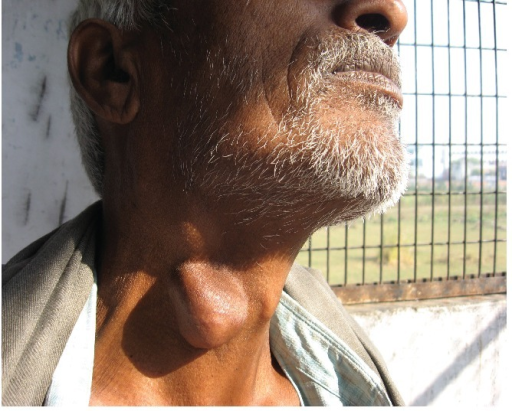Acinic cell carcinoma pathophysiology
|
Acinic cell carcinoma Microchapters |
|
Diagnosis |
|---|
|
Treatment |
|
Case studies |
|
Acinic cell carcinoma pathophysiology On the Web |
|
American Roentgen Ray Society Images of Acinic cell carcinoma pathophysiology |
|
Risk calculators and risk factors for Acinic cell carcinoma pathophysiology |
Editor-In-Chief: C. Michael Gibson, M.S., M.D. [1]; Associate Editor(s)-in-Chief: Ramyar Ghandriz MD[2]
Overview
Pathophysiology
Genetics
- The development of acinic cell carcinoma is the result of multiple genetic mutations that suggest association of tumor suppression genes such as[1][2]:
- chromosome 5q
- chromosome 6p
- chromosome 17p
- Deletions of chromosome 6q
- Loss of Y
- Trisomy 21
- Molucular syudies suggest that retinoblastoma pathway also can be involved with acinic cell carcinoma.[3]
Associated Conditions
Gross Pathology
- On gross pathology, acinic cell carcinoma usually presents as a solitary, encapsulated, soft tumor of gray-whit appearance.
- In case of recurrent lesions, the tumor is often lobulated without capsule with necrosis area.

Microscopic Pathology
On microscopic histopathological analysis, [feature1], [feature2], and [feature3] are characteristic findings of [disease name].
References
- ↑ El-Naggar, Adel K; Abdul-Karim, Fadi W; Hurr, Kenneth; Callender, David; Luna, Mario A; Batsakis, John G (1998). "Genetic Alterations in Acinic Cell Carcinoma of the Parotid Gland Determined by Microsatellite Analysis". Cancer Genetics and Cytogenetics. 102 (1): 19–24. doi:10.1016/S0165-4608(97)00273-2. ISSN 0165-4608.
- ↑ Sandros J, Mark J, Happonen RP, Stenman G (1988). "Specificity of 6q- markers and other recurrent deviations in human malignant salivary gland tumors". Anticancer Res. 8 (4): 637–43. PMID 3178153.
- ↑ Liu, T; Zhu, E; Wang, L; Okada, T; Yamaguchi, A; Okada, N (2005). "Abnormal expression of Rb pathway–related proteins in salivary gland acinic cell carcinoma". Human Pathology. 36 (9): 962–970. doi:10.1016/j.humpath.2005.06.014. ISSN 0046-8177.
- ↑ Sherwani, Rana; Akhtar, Kafil; Ahmad, Murad; Hasan, Abrar (2011). "Cytologic diagnosis of acinic cell carcinoma of minor salivary gland: a distinct rarely described entity". Clinics and Practice. 1 (3): 58. doi:10.4081/cp.2011.e58. ISSN 2039-7283.